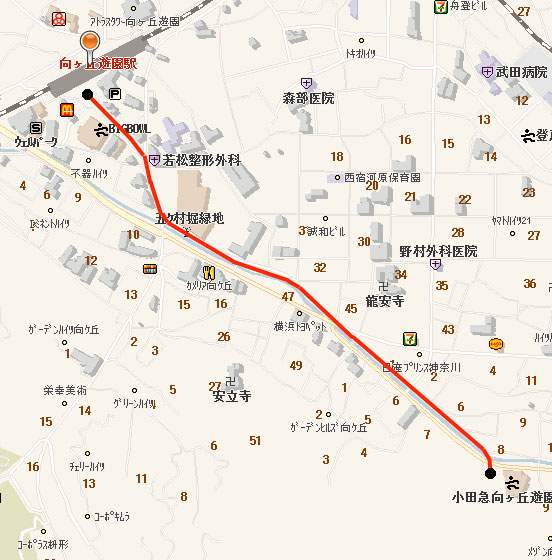Lockheed Monorail
by Kim Pedersen
page two of three
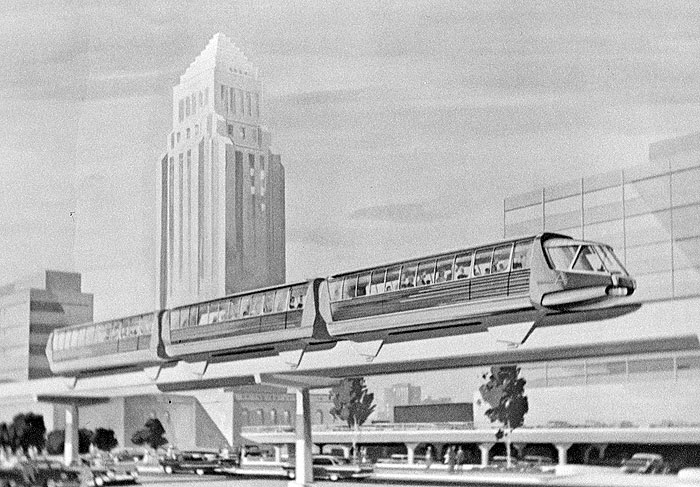
Before the Seattle fair proposal, Lockheed has already proposed a monorail for the Los Angeles area in mid-1959, just as the Disneyland-ALWEG Monorail was premiering to the world. According J. R. Day's book More Unusual Railways, 75-mph trains would run on a 20.8-mile stretch from West Covina into the center of Los Angeles in 26 minutes. This illustration shows a jet-age Lockheed train passing LA's City Hall.
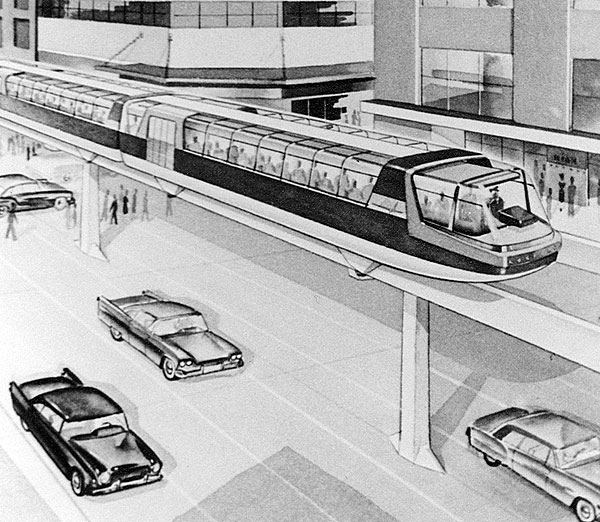
The LA Lockheed system would cost $1.5-million to $3-million per mile, compared to the $9-million per mile cost of freeway construction and $11-million per mile for subways (1959 prices).
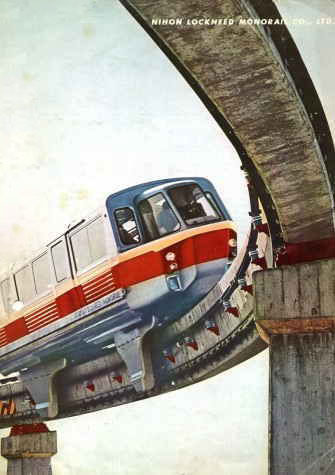
Hardware! In May of 1961 Lockheed Aircraft Corporation and Kawasaki Aircraft, along with six other prominent Japanese firms, jointly established the Nihon-Lockheed Monorail Company. In 1962 a full-scale monorail test track was built at Kawasaki's plant at Gifu, Japan. The above image is from a promotional brochure and shows the highly-banked train negotiating one of the test track's tight turns. Four 100-horsepower electric motors per car propelled the train at speeds up to 75 mph (121 kph).
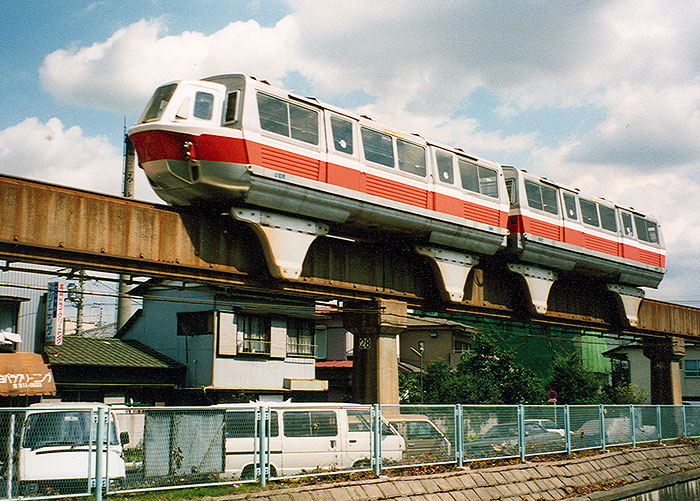
After providing Nihon-Lockheed with several years of good test data, the test train went into revenue service in 1966 Between Mukogaoka-yuen and a nearby amusement park. This image was photographed by the author on a visit in 1990. The monorail was featured in The Monorail Society's 1992 VHS video "Monorails of Japan" (while the VHS video featuring Mukugaoka is no longer available, a newer Monorails of Japan DVD was produced in 2003).
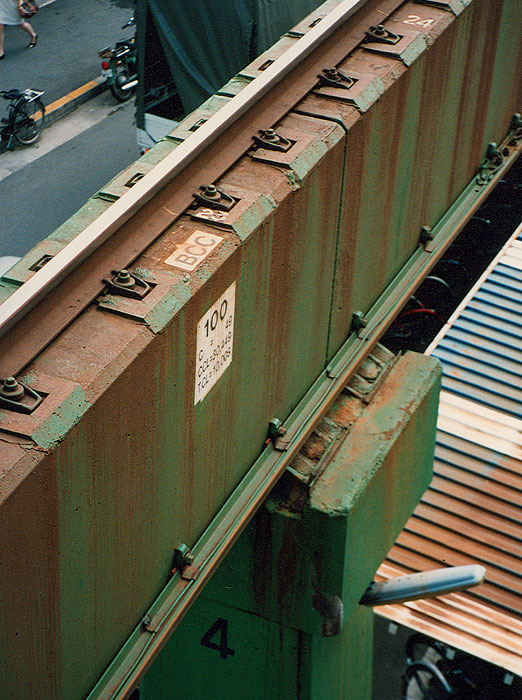
The standard rail on top of the beam carried the load while the smaller steel rails on the beam sides contacted the guide wheels. While you might think the steel rails and wheels would provide a smooth ride, that wasn't the case when the train transitioned to and from banked turns. The train didn't smoothly bank to the side, but jarred passengers in a series of rocking motions until achieving the correct angle. The Mukogaoka Monorail operated until 2001, when the amusement park at the southern end of the line permanently closed.
NEXT >>>
Lockheed Monorail Special one / two / three
